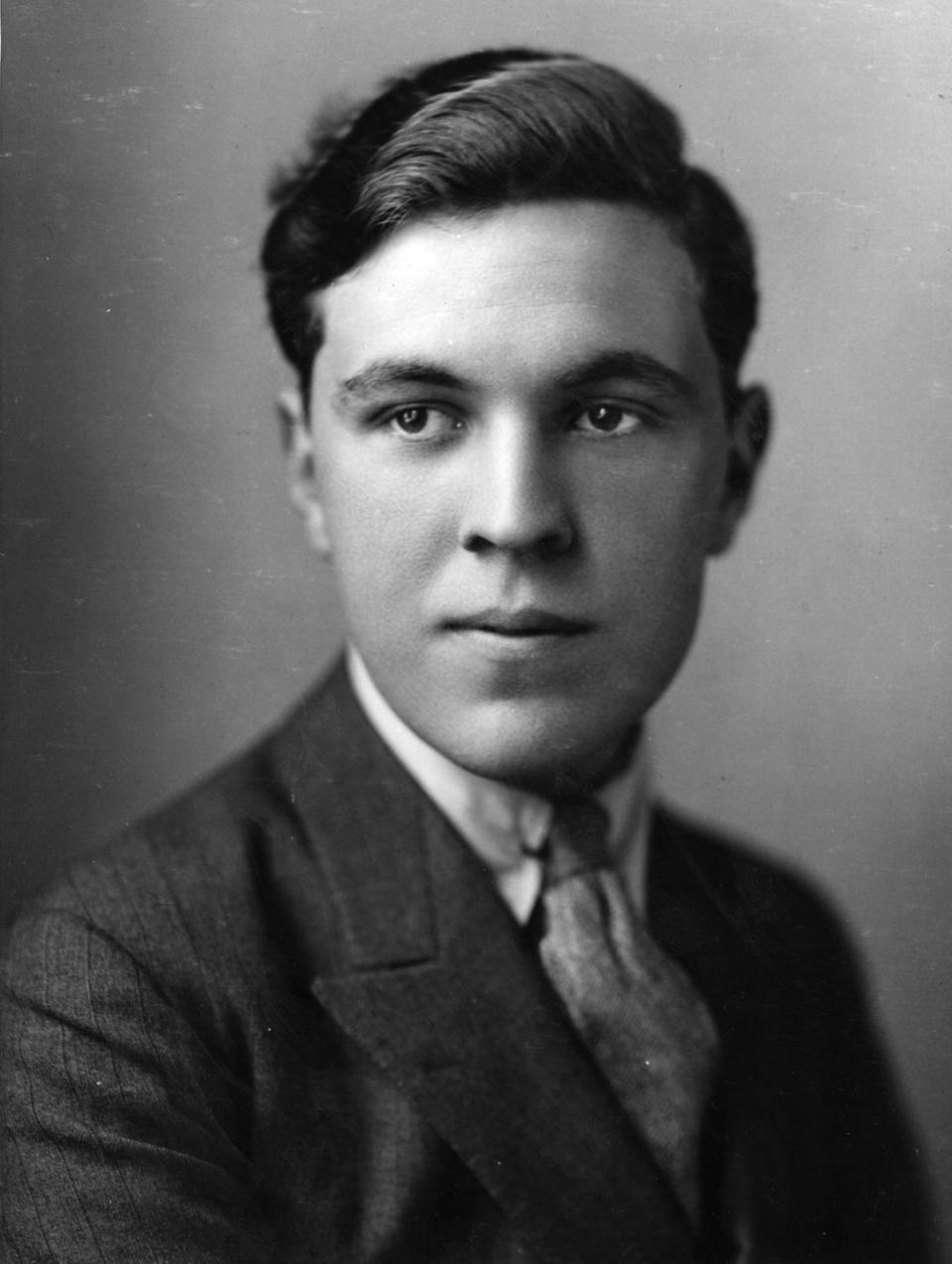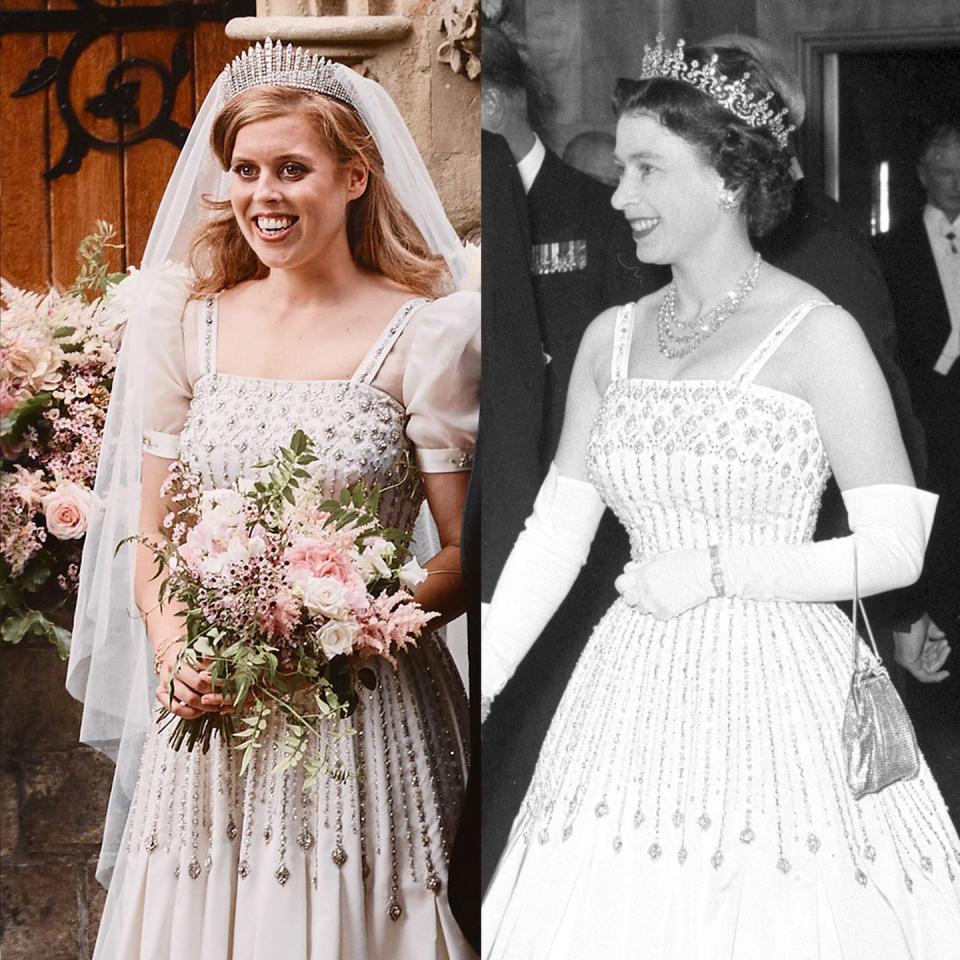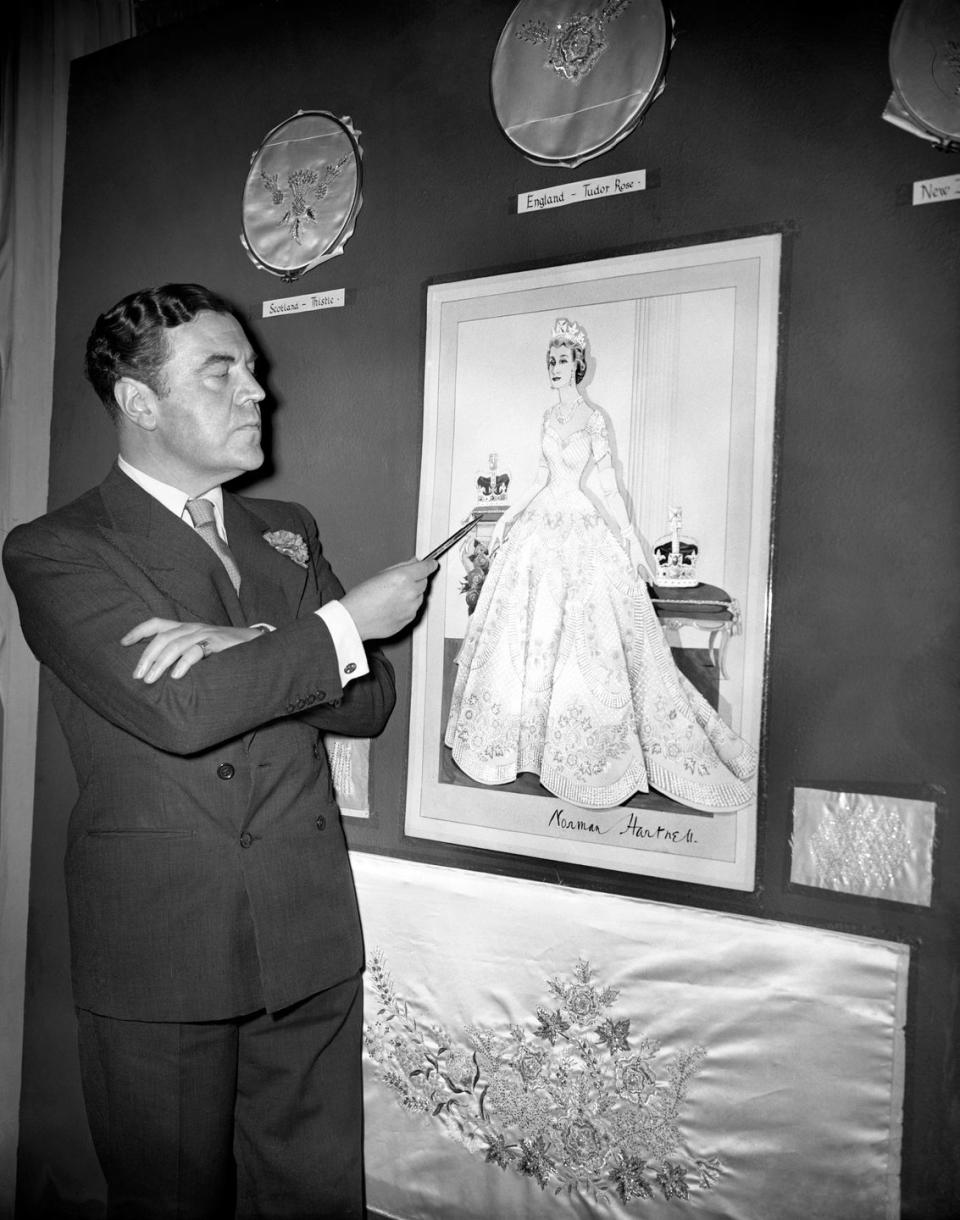Norman Hartnell, the Designer Behind Princess Beatrice's Wedding Dress, Has Long Been Fashion Royalty

Last week, Princess Beatrice managed to pull off a surprise wedding—a tremendous, unexpected feat for a royal, even amid a pandemic. But perhaps even more shocking than the Princess's previously unannounced, intimate ceremony was her choice of dress: a gown from the Queen's own closet.
That's right: unlike most royal brides in recent history, who've chosen a dream designer to craft a custom garment, Beatrice went vintage. And she didn't just pull any old pretty dress, either; she went for one created for Queen Elizabeth by none other than Norman Hartnell, once the Windsors' go-to couturier.
Here's what you should know about Hartnell, and how his creations helped define the royals' aesthetic for decades.
At the beginning of his career, he quickly found his footing as a society designer.
Norman Hartnell was born in London on June 12, 1901. His parents owned a pub, the Crown & Sceptre, but he never much talked about that as an adult—pubs weren't exactly popular among his well-to-do clients. He caught the fashion bug while studying at Cambridge, first creating costumes for the Footlights Dramatic Club.
Having found his calling, he dropped out of university to pursue it, leveraging the connections he made at the elite university to find upper-class clients. It wasn't long before he'd found international success, catering to both silver screen stars and high-society ladies.

Hartnell first gained the favor of the Queen Mother.
In 1935, Princess Alice, Duchess of Gloucester asked Hartnell to create her wedding dress, as well as looks for her bridesmaids. Princesses Elizabeth and Margaret were among those bridesmaids, and their mother took a particular liking to Hartnell's designs. From then on, Hartnell would be a favorite of the Queen Mother's; she awarded him a Royal Warrant in 1940, signifying his importance.
Queen Elizabeth fell in love with his work, too.
The Queen chose Hartnell two create the two most memorable designs she's ever worn: her 1947 wedding dress, and her 1953 coronation gown. In 1957, he was awarded his second Royal Warrant, this time as a dressmaker to Queen Elizabeth.
Hartnell didn't just design dresses for the monarch's biggest moments; he created many of the garments she wore to the more ordinary formal events on her royal calendar. The dress that Princess Beatrice would eventually wear to her own wedding has been worn by the Queen on at least three occasions, ending in the mid-1960s: a state dinner in Rome, the premiere of Lawrence of Arabia, and the 1966 State Opening of Parliament.
The Queen wasn't the only Windsor besides the Queen Mother who became a devoted client. Princess Margaret enlisted him to design her royal wedding dress, too.

Aesthetically, he was an unabashed maximalist.
"He used to say, ‘He de-flapped the flapper,’ which meant evening dresses that were short, suddenly became long," Michael Pick, Hartnell's biographer, told WWD.
Hartnell's designs were often intricate and always glamorous. Looking back at his work, it seems to exemplify a certain midcentury opulence—and a time when Hollywood and high society shared a taste for the luxuriant. As he once declared, per British Vogue, "I despise simplicity; it is the negation of all that is beautiful."

Despite his professional success, he struggled in his personal life.
Hartnell was not particularly good at overseeing the business side of his operation, Pick notes. "For me, the great sadness of this story is that it was a long productive life, and he ended up with actually nothing," he said.
As a gay man in the 20th century, Hartnell was also forced to keep his relationships under wraps; he might have lost everything if his sexual orientation had been made public. He also enjoyed dressing in women's clothing, and per Pick, would place orders for himself at his business under the name "Miss Kitty." Sadly, he had to keep all of this secret as well.
"He lived a very precarious private life," Prick said. But it wasn't all sad. "My conclusion is that he rather enjoyed that aspect of it. He rather enjoyed the secrecy and the fact that it was so near the edge in terms of what he was up to. I think he really got the thrill out of that."
You Might Also Like

